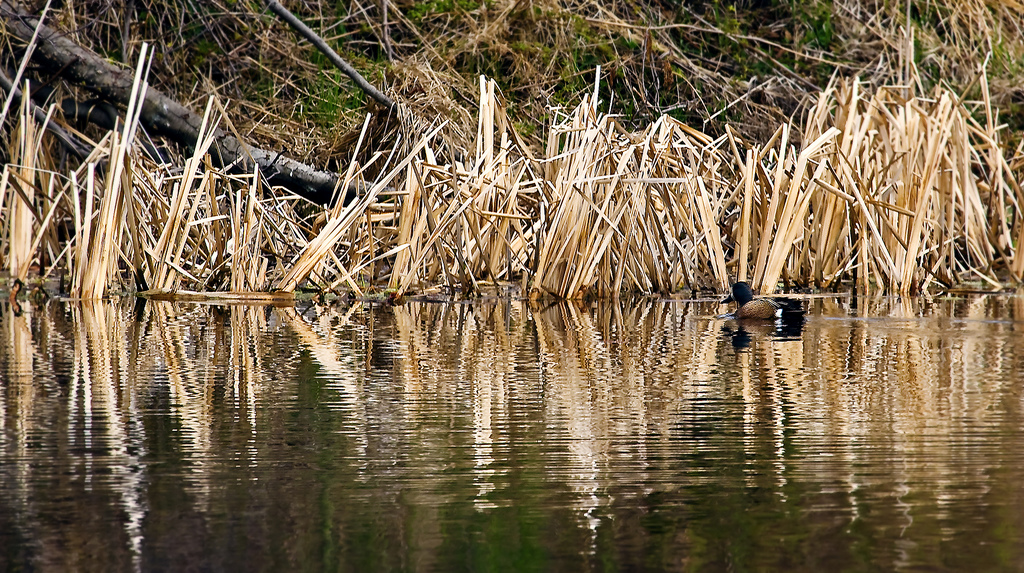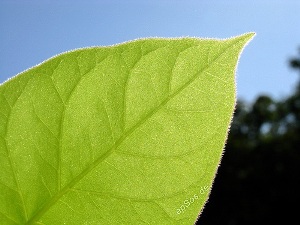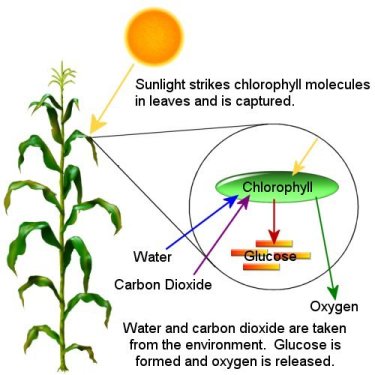What's on the menu?
Typha latifolia is a photoautotroph, like most plants. This means that it produces its nutrients from sunlight and carbon dioxide by a process known as photosynthesis.
The process of photosynthesis requires the cells to have water. Water is transported starting at the roots through the plant tissue xylem. The photosynthesis takes place in the chloroplasts of cells. Carbon dioxide and water enter the plant through the stomata. The plant then converts the carbon dioxide and water to sugar (glucose) and oxygen. The plant will release the oxygen through the stomata as waste and it will convert the sugar to ATP through cellular respiration to make it more useable.
To learn about reproduction and life cycle of the cattail, click here.
Back to the marsh


